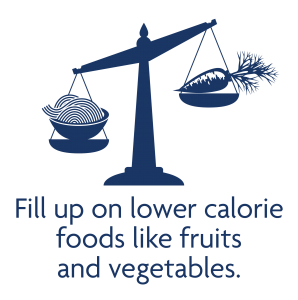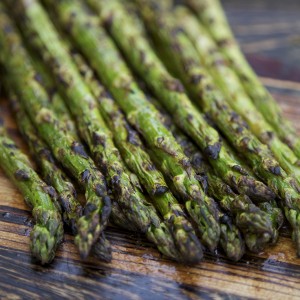Nutrients Are Key
A Healthy You
JUMP TO: Home | Calories Can Count | Nutrients Are Key | Portion Size Matters | A Plan Is Paramount
Nutrients Are Key

Healthy eating doesn’t have to be complicated or stressful. In fact, it can be boiled down to seven words, written by Michael Pollan in his book, In Defense of Food: Eat Food. Not Too Much. Mostly Plants.
Research shows that when comparing dietary patterns that work for weight management, there is one commonality: they emphasize whole foods and include lots of plants. Foods that promote a healthy weight have also been linked to better performance — both physical and mental — and overall health. On the other hand, diets filled with processed foods, added sugars, and red and cured meats have been linked to risk of weight gain and chronic disease, and are more likely to leave you feeling sluggish.
Ask Yourself: How Dense Are My Calories?
Ounce per ounce, not all foods are equal when it comes to calories. Calorie density is a way of describing the number of calories a food offers for the amount of food you eat. Foods filled with water and fiber, most notably fruits and vegetables, tend to have a low calorie density, while foods with less water and fiber, such as pasta or cheese, have a high calorie density. So, for the same number of calories you can eat a larger quantity of broccoli than you can white rice.
These lower calorie foods also tend to have a higher nutrient content (think whole foods, especially plants). Plant foods are packed with nutrients such as fiber, vitamins, minerals, and many phytonutrients, which are health-promoting compounds. For example, 1 cup of cooked white rice is more than 200 calories and provides minimal fiber and a small amount of vitamins and minerals, while 2 cups of raw vegetables is less than 100 calories and is packed with water, fiber, vit C, vit A, potassium, calcium, and many phytonutrients. So, you can eat double the volume of vegetables (and probably fill up faster) for fewer calories and more nutrition.
While starchy vegetables like potatoes and corn offer many nutrients, they have a higher calorie density than non-starchy vegetables like asparagus or bell peppers. To keep calories in check, choose either a starchy vegetable or a whole grain and fill the rest of your plate with plenty of non-starchy vegetables.
Nutrient-Rich Foods
Recognize nutrient-rich foods by looking for:
- Colorful produce: Color is a sign of vitamins, minerals, and phytonutrients. The red color of tomatoes comes from lycopene, a powerful phytonutrient, and the orange color carrots is beta-carotene.
- Whole, minimally processed foods: The closer a food is to its original form, the more nutrients it is likely to offer. In general, the more packaging, the fewer the nutrients.
- Plant-based proteins and fish: These proteins provide more positive nutrients than other proteins and are generally lower in calories than red and cured meats. This doesn’t mean you should never eat red meat, but aim to replace some meat with fish, poultry, or a plant-based protein.
- Healthy, plant-based fats: They are essential to health and well-being; however, a little goes a long way. Eat moderate portion sizes of foods that contain fat like nuts, seeds, avocado, and plant oils, and choose foods that have been prepared with minimal fat.
Choose nutrient-rich foods most often. These foods will help you reach and maintain a healthy weight while also giving your body fuel to look, feel, and perform your best. Choosing nutrient-rich foods is one way to help manage portion sizes, a key to attaining energy balance. Read more about why portions matter here.
